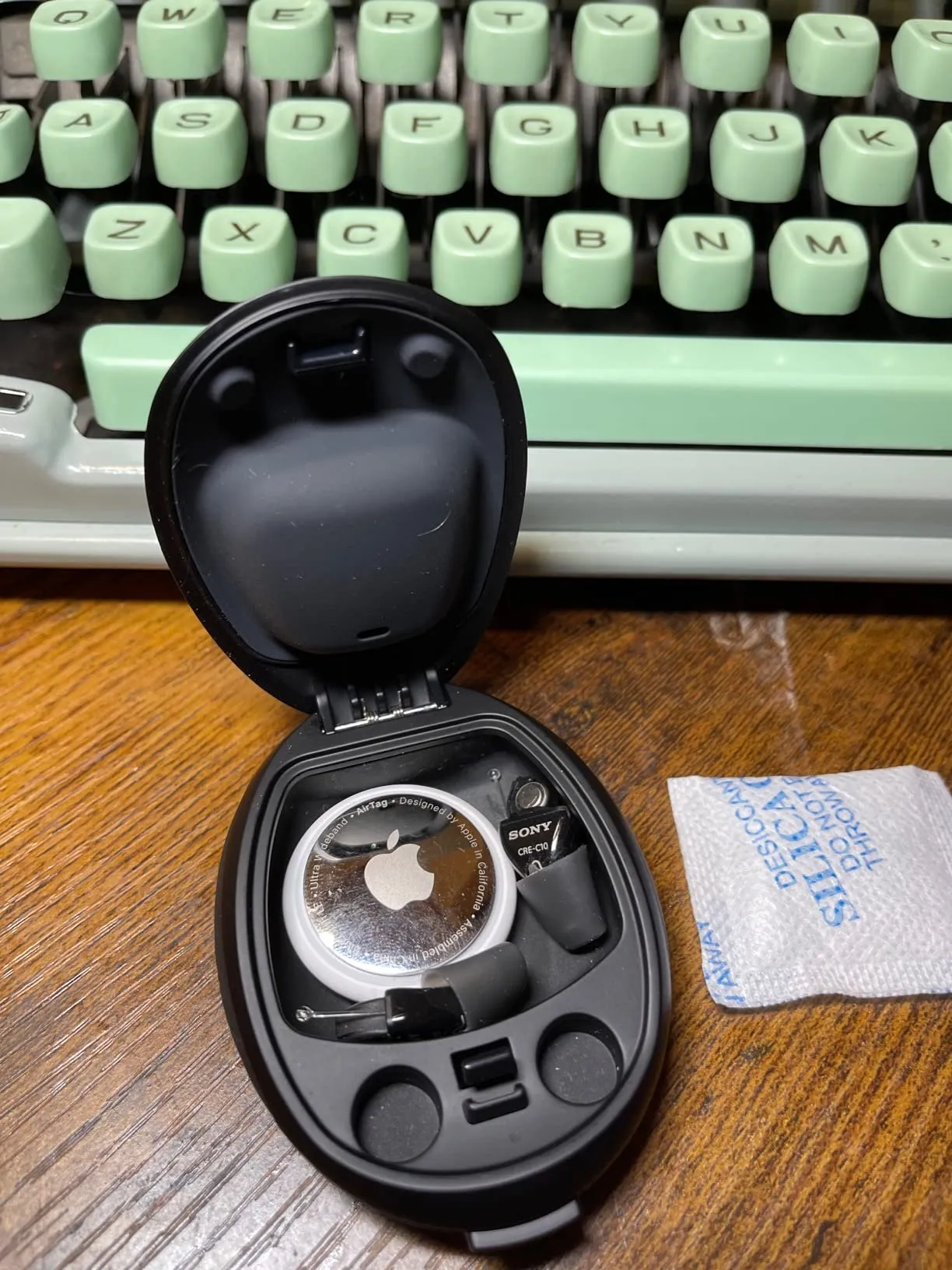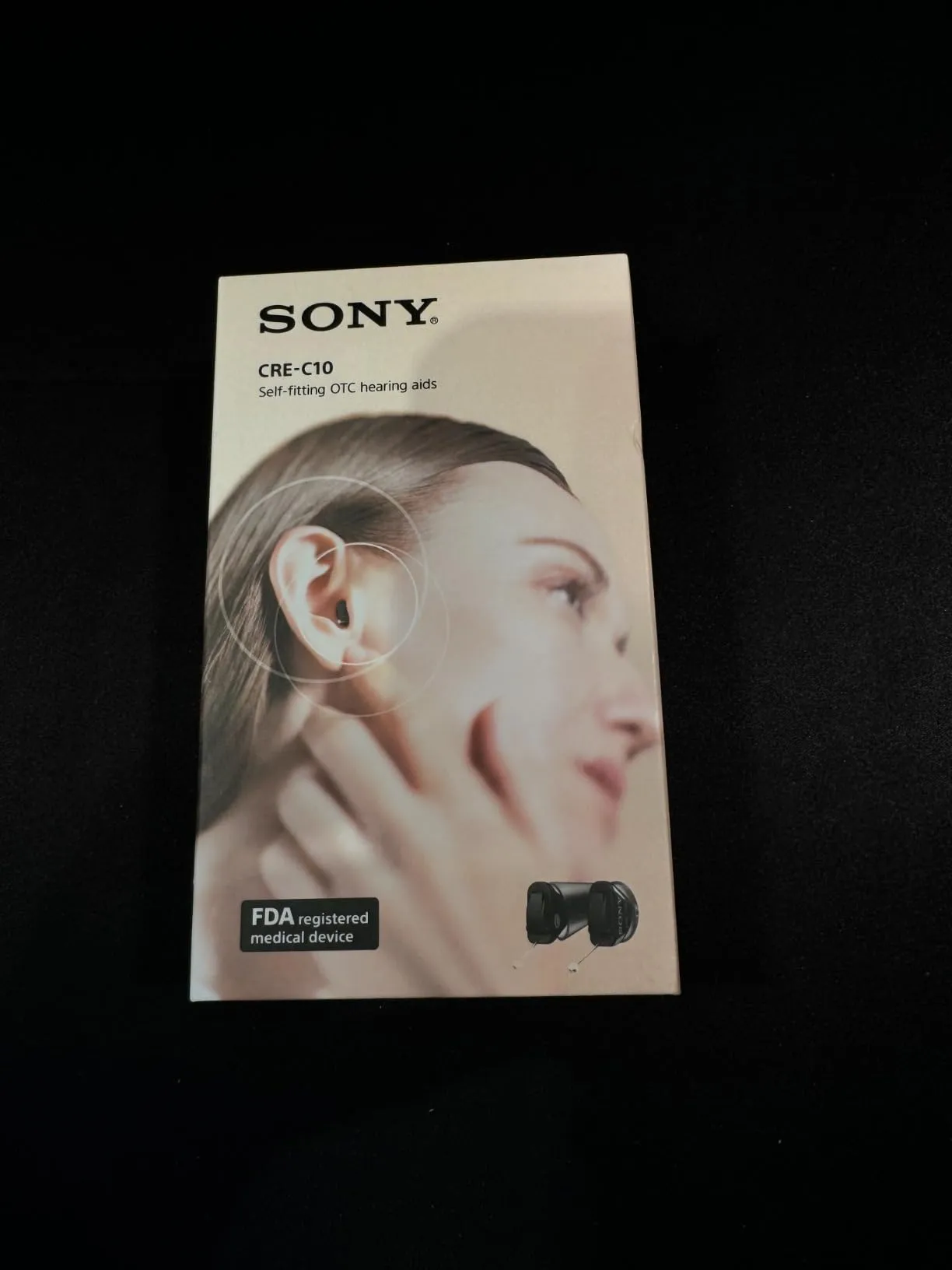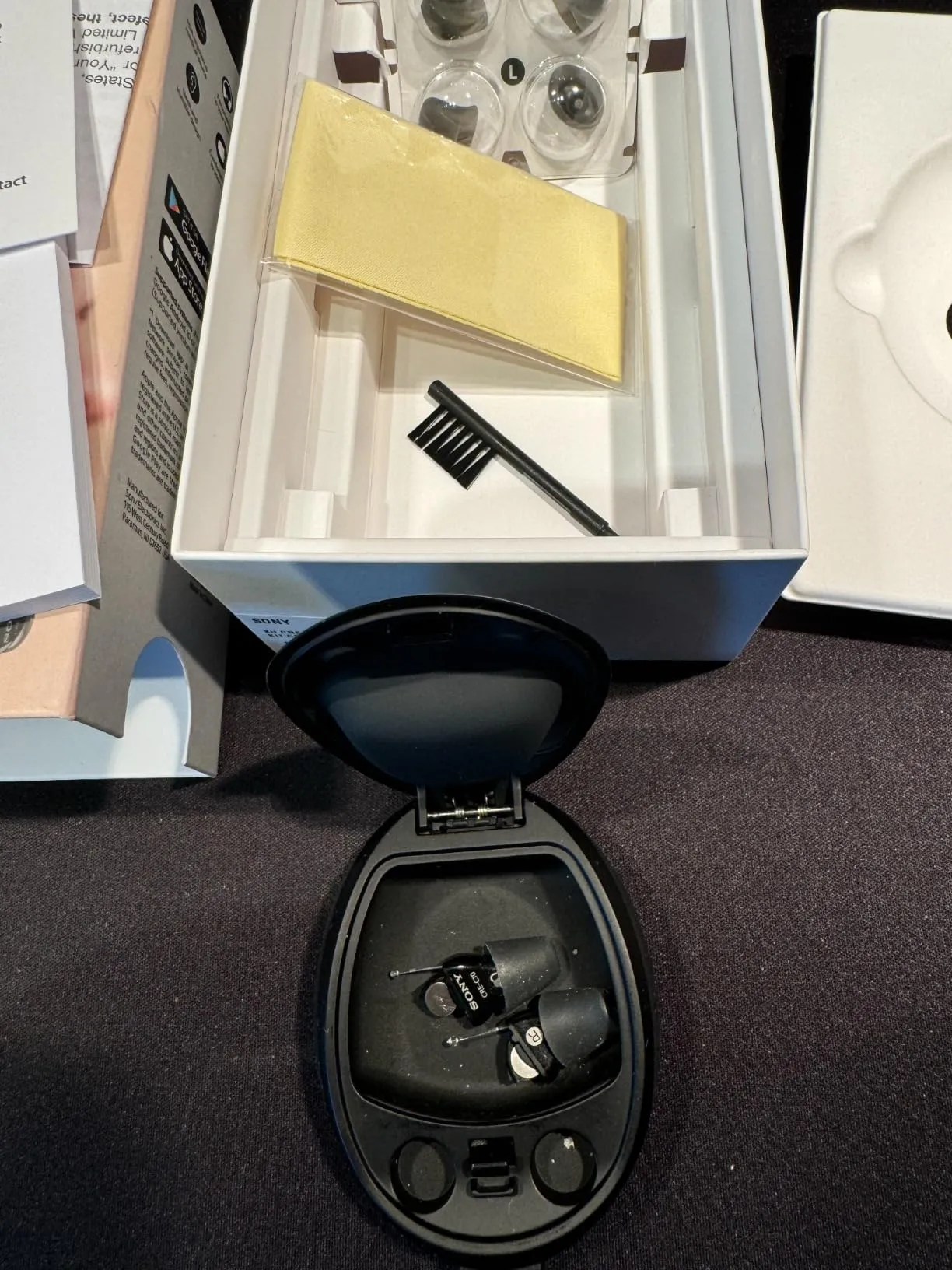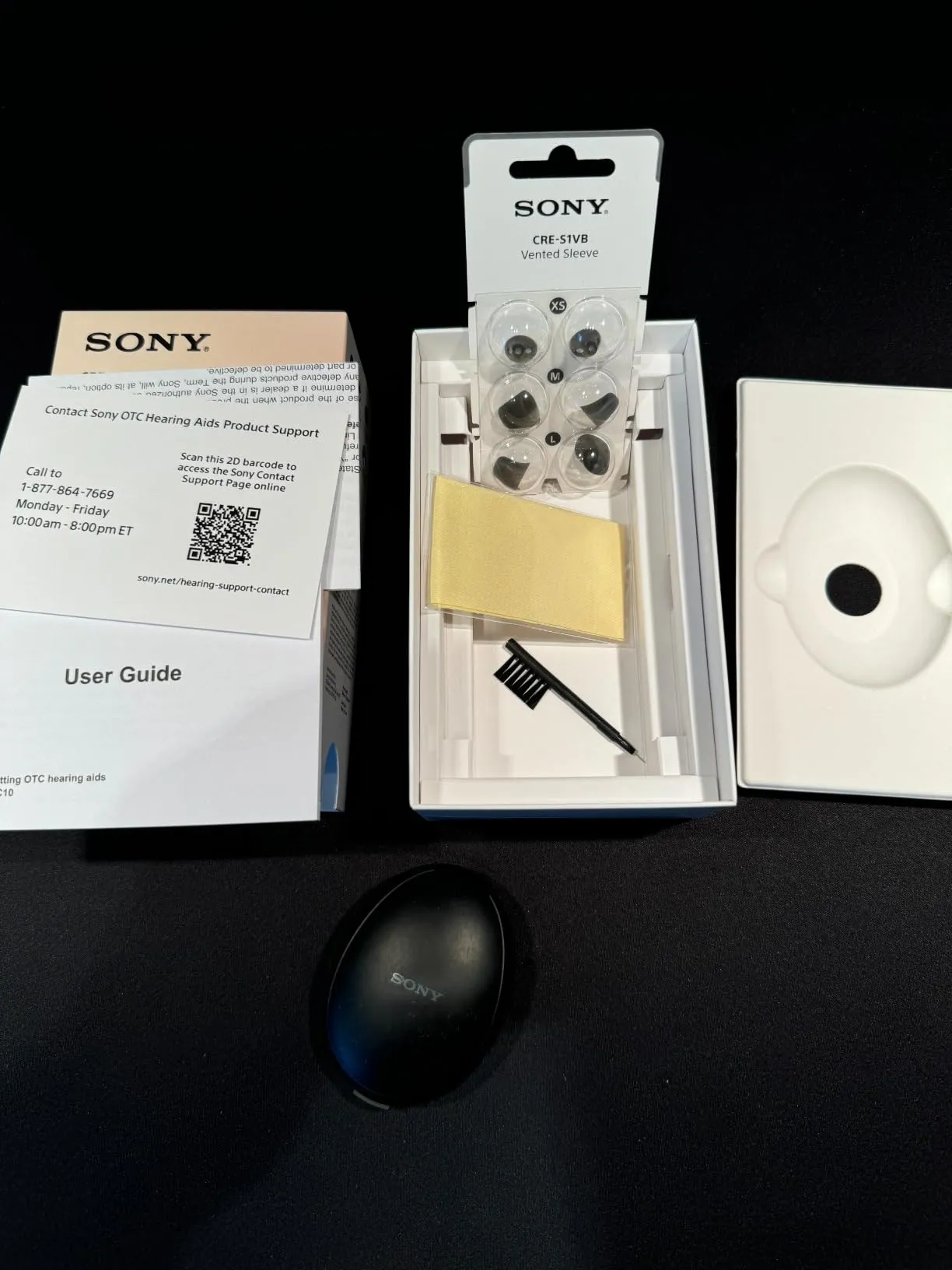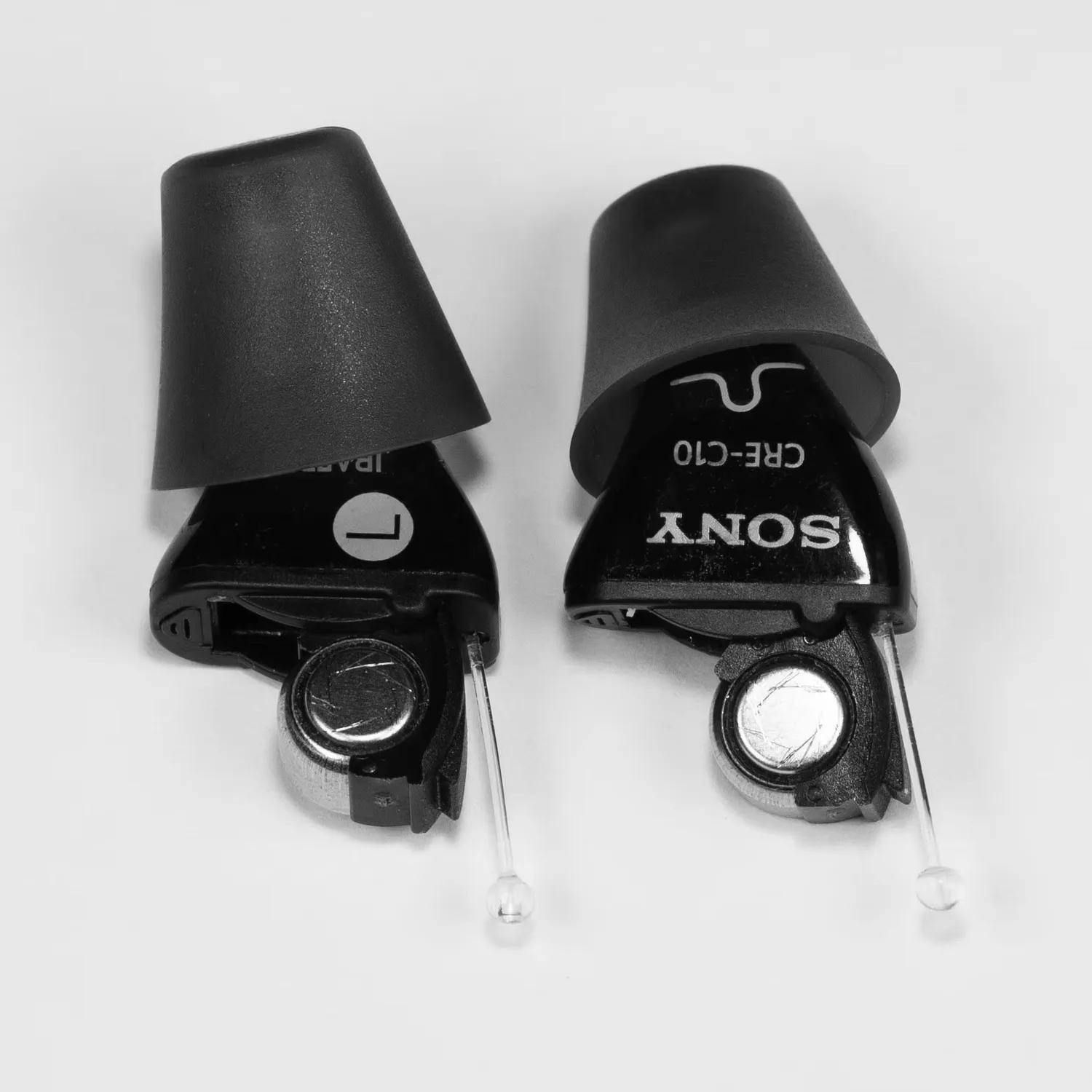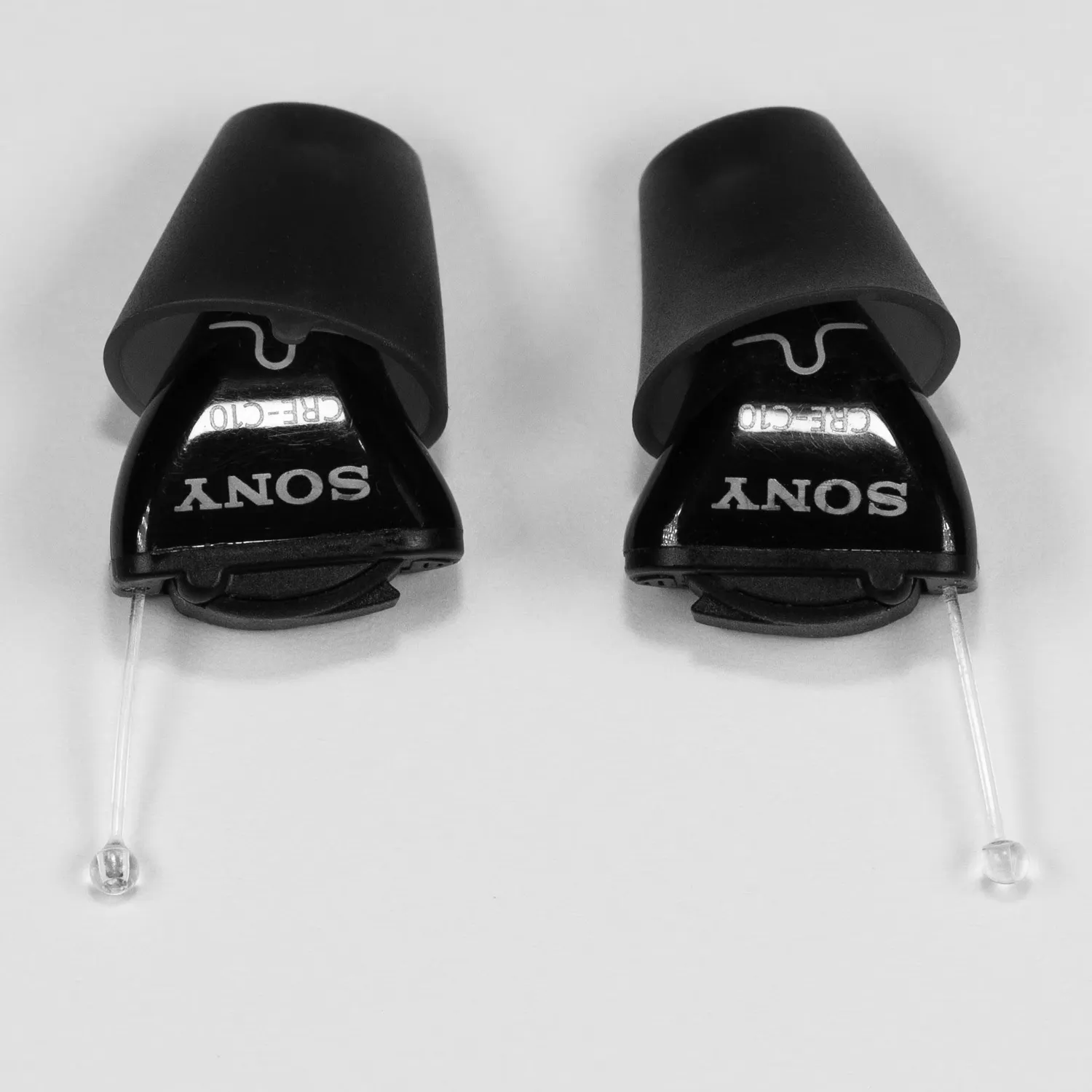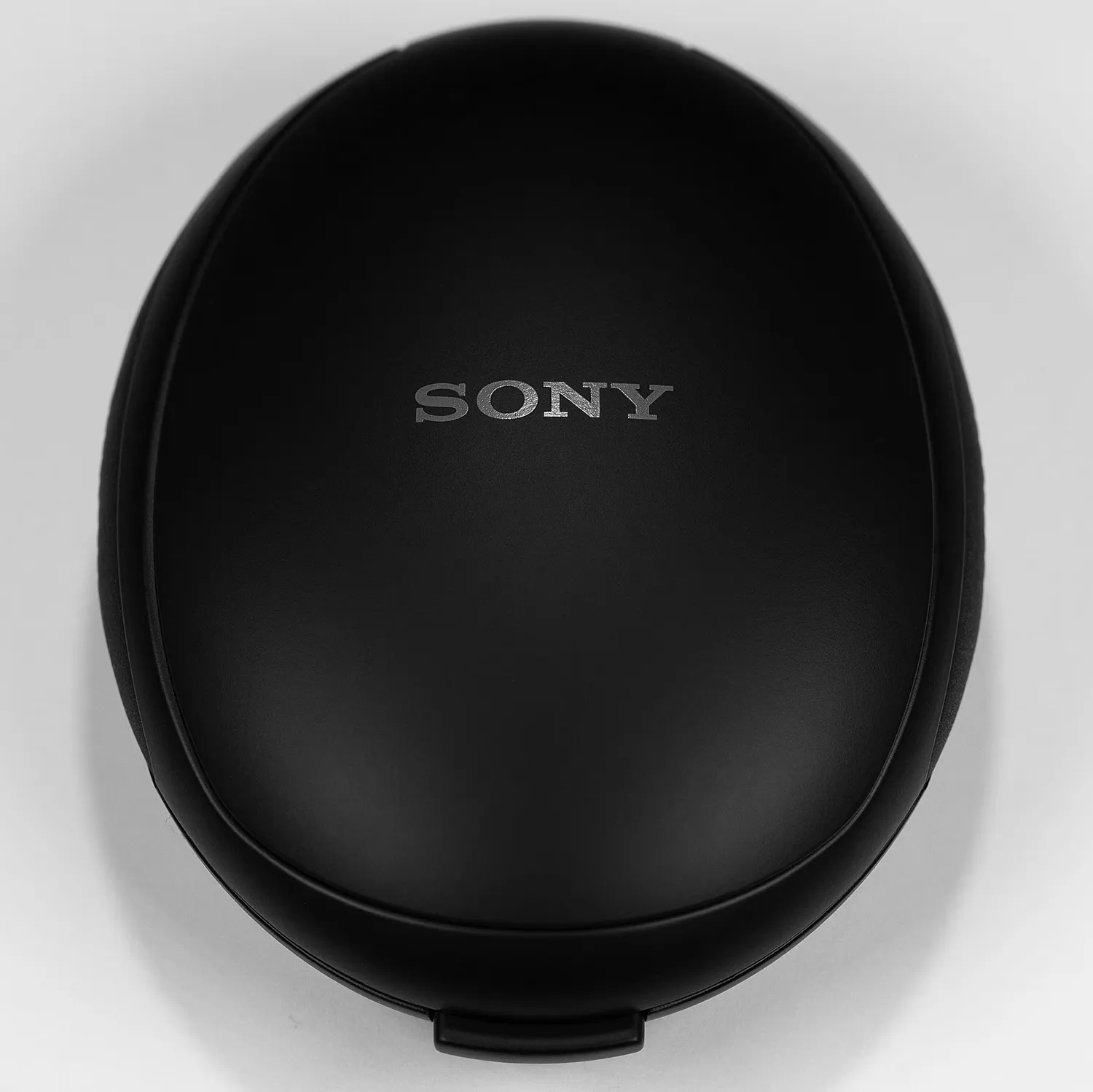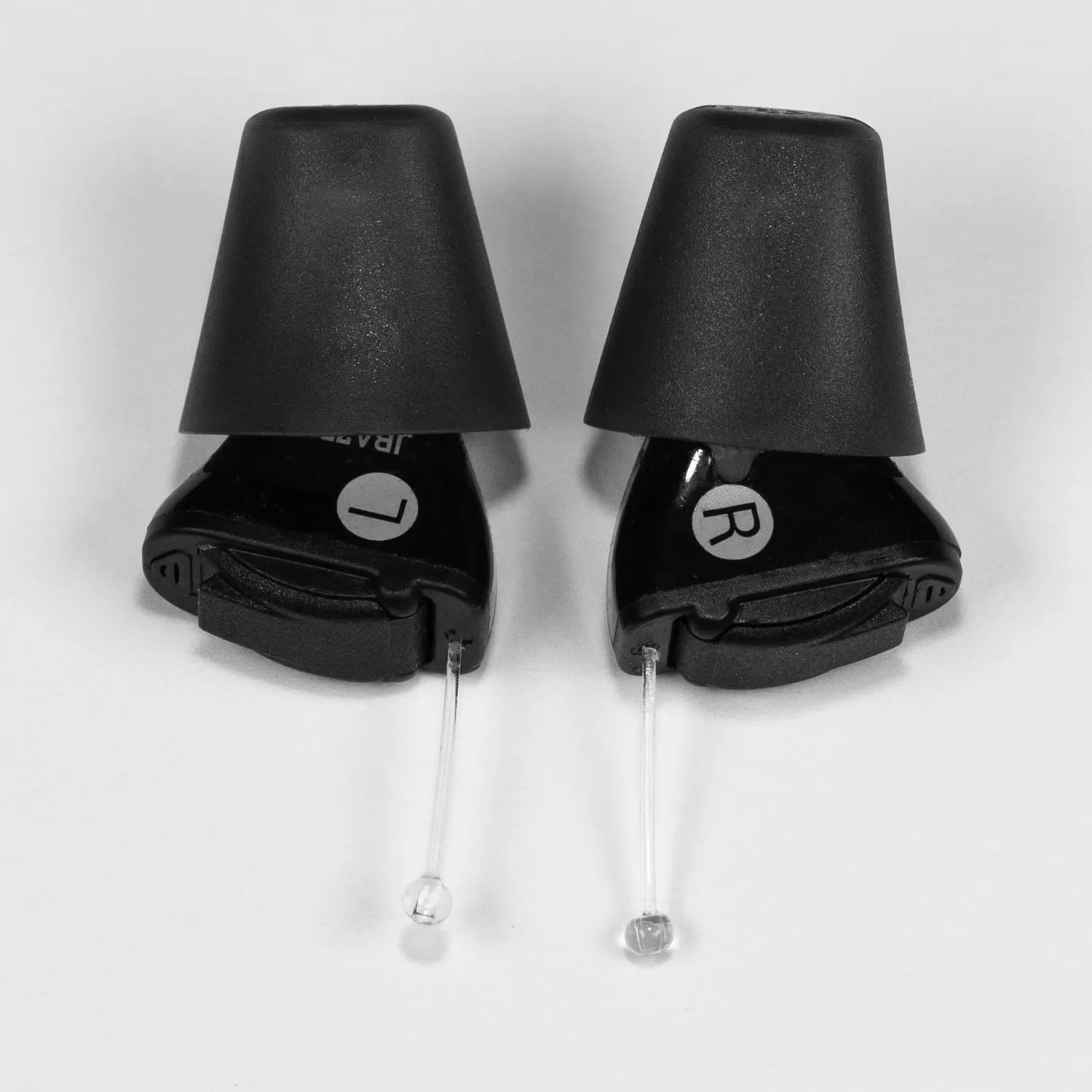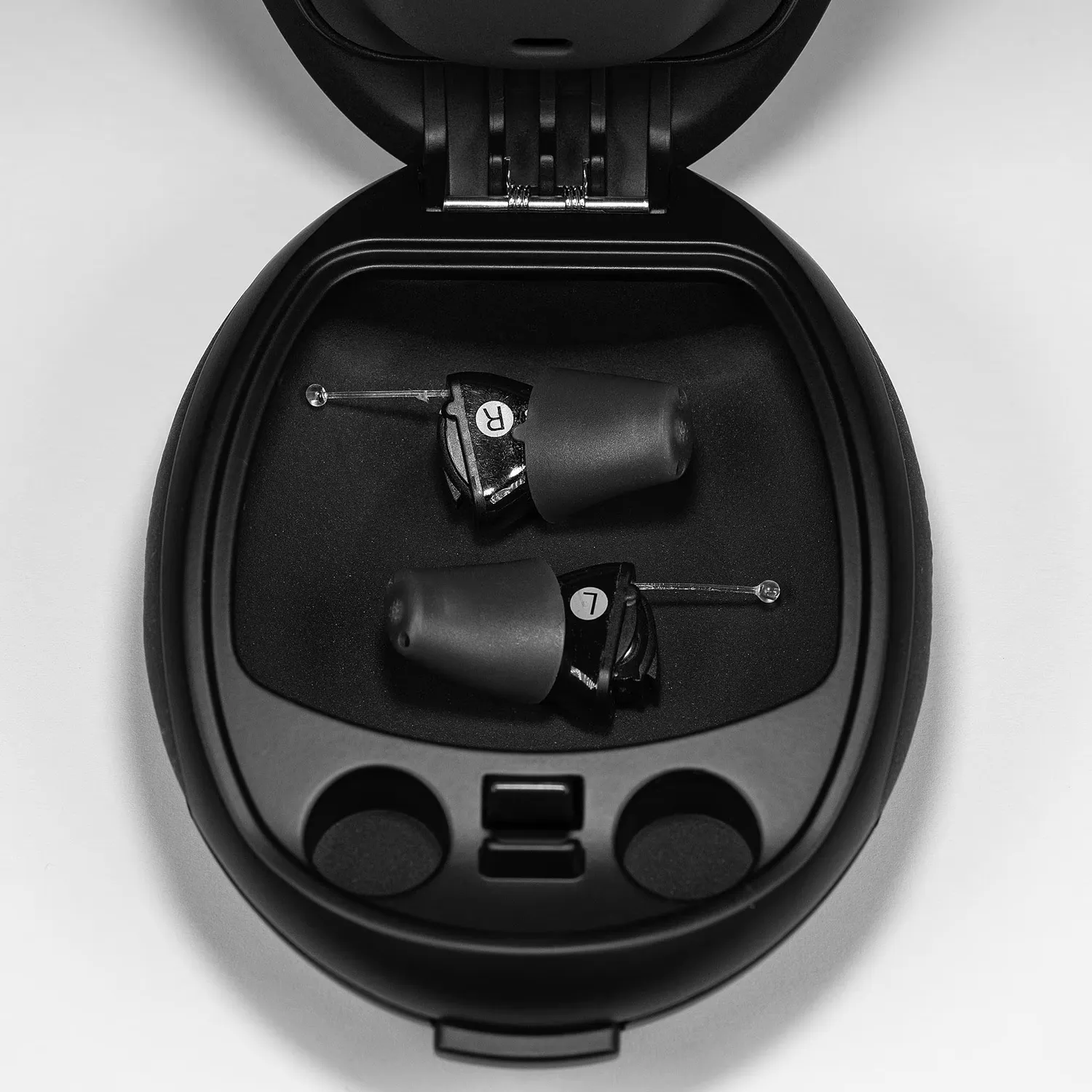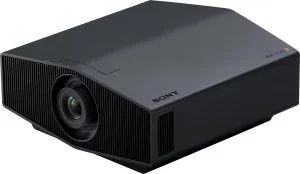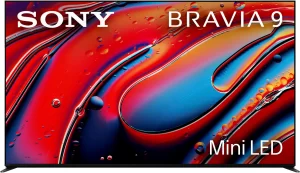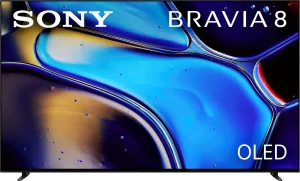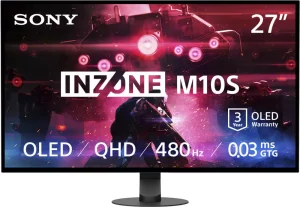Executive summary: the CRE-C10 is life-changing, and excellent! But there is much more to consider. Let me tell you what I’ve discovered:
Straight off, the Sony CRE-C10 is a world apart from the inexpensive (mostly under $100) models, and unlike those, is considered a medical device, and as such is sales tax free in the USA. Because it’s OTC (Over-the-Counter) you can buy it direct, without an Rx or a visit to a hearing professional. And although its price, at nearly $1,000, is high, it’s much less expensive than one you’d buy from a hearing center/audiologist.
I chose to purchase the replaceable-battery model (called the Sony CRE-C10), yet I’ll also provide in this review a comparison with the rechargeable battery model that’s called the Sony CRE-E10. The two are significantly different in size, appearance, and features, each with its own pros and cons. Which model you choose will depend upon what you value most. The rechargeable one has more features, some of which may be important to you. The replaceable battery model is virtually invisible. Thus, appearance might be a decisive factor.
Indeed, at least for me, the most important difference is the appearance. While the C10s are true stealth tech and can’t easily be seen, everyone will know you’re wearing the E10s, which sit outside the ear and are black and seemingly as large as quarters.
Will they get clocked as a hearing aid or a bluetooth speaker? Do you care?
Here are some reasons to care:
1. Vanity.
2. Privacy.
3. To combat ageism.
4. To combat (illegal) discrimination due to being perceived as a person with hearing loss (e.g., job discrimination).
5. Because you don’t wan’t to be seen as an older adult (or anyone) who is hearing impaired and thus a target for crime. While the stigma of hearing aids isn’t anything near what it was 30 years ago, how you feel about yourself always matters.
So, let’s first talk about whether you need this, and also whether it will help you. Sony is clear that they classify this for use by people 18 and over who believe/perceive they have mild to moderate hearing impairment. That’s basically part of the FTC’s OTC ruling.
The Sonys are meant to be adjusted (tailored to your specific hearing loss) solely using the app, without the intervention of an audiologist or hearing professional. There are the usual caveats and warnings about seeking medical help, etc., under certain specified circumstances. If these apply to you, follow the advice please.
If you’d like a view from the medical establishment, Johns Hopkins Medicine has an online article covering Over-the-Counter hearing aids, and their FAQ includes their answer to the question, “why should I see an audiologist before getting an OTC hearing aid?” The tenor of the article is from the medical-professional side and is worth reading.
Yet the FTC now allows you to purchase an OTC hearing aid, and thus you do not require a visit to a physician or audiologist before you buy one. Johns Hopkins also has a telling article entitled, “The Hidden Risks of Hearing Loss,” which is a must read; so please read it even though its conclusions might be surprising and are somewhat controversial. This is vital information that you and your loved ones should know, because it addresses hearing loss and a putative connection to dementia, its possible interference with “some of the mental processing needed to walk safely.” Wow!
To be clear, my input in this review is just from the point of view of a consumer who has purchased this because of a perceived mild-to-moderate hearing loss, and my advice is my personal experience, not medical advice.
Let me describe my before-and-after experience:
The 1st question you’ll need to answer: Do you have ‘mild to moderate’ hearing loss? I’m pretty sure I’m over the mild, and a bit into the moderate. See if this rings a bell, as most likely you can hear bells, like the loud ding on the desk of the concierge.
But can you hear:
Birdsong?
Wind?
The water faucet?
Steam?
The clinking of a set of door keys?
The touch-tone pitches as you enter a phone number on the iPhone keypad? Or the various clicks on entering a text?
People talking on their phones as they walk by, and what they’re saying?
Conversations?
And critically: An approaching car!
(And as a quick aside: If you are watching TV and someone tries to talk to you, especially from behind, and you feel annoyed, that’s another clue to look for. It’s your brain on overload trying to concentrate on two things at once. That’s what it felt like to me.)
Here’s a kind of hearing test you might want to try before you buy: If someone says these two names to you softly, can you tell them apart?
Janet
Janice
They differ only in the final sound, and the “s” which ends Janice is a hissing (voiceless) sound that will be difficult or impossible to hear if you have a lot of high frequency hearing loss. Yes, that’s right. Even though most speech is mid-frequency, it’s vital to hear those higher frequencies, as they affect your ability to discern consonants, especially initial and final ones, and thereby play a big role in intelligibility. There are two ways of saying that final “t” in Janet: with a puff of air (British) or without (‘merican). I knew a lot of Janets and Janices, and it was a problem. Also, English requires hearing vowels clearly, lest pit/pete/pet/pate/part/put/putt are insufficiently differentiated. And if everything is muffled, it’s hard to tell them apart.
That’s the before. Here’s the after, which is the good news:
All of the above normal sounds were pretty much inaudible (or very nearly inaudible) to me before firing up the Sony, and all are perfectly clear now. The water faucet near made me jump! And now I can hear the “ding!” of the toaster over from outside the kitchen, and can converse with people who speak softly even while they are wearing a medical mask. With the TV on. The difference is night and day. It’s really worth something to not drive your friends crazy.
Now, to be sure, even with a $100 low-price hearing aid, all of those normal sounds (birdsong, etc.) become audible, but not necessarily in a good way. Most of those less-expensive aids are not adjusted to your particular hearing loss, with the result that your likely perception may be that everything is loud, and annoying, so as a result you may not really want to wear them. Some of these low-price models have “modes”, being different frequency curves, but they never helped me at all.
My hearing loss, and quite possibly yours, too, is with the higher frequencies. After going through the steps to customize the aids in the app, Sony picks a frequency curve it thinks is right (and I wonder of there’s some built-in AI intervention). But you can override, adjust, and question later on.
Note that Sony believes, as do many in the field, that it may take weeks for you to adjust (it’s your brain that’s adjusting for you), but for me, not really. I’ve worn them for only a few days and I forget they’re in. Until something beeps at me. From behind.
Before I get to discussing the differences between the two models, I want to talk about what you get in the box, and what you have to do to make these work.
There is manual that comes in the box. It is a model of excellence. It’s superb. Every single step is made as simple as possible, clearly shown in drawings, and backed up by videos (QR codes are in the manual). You will need time, and you will need patience.
Specific to the CRE-C10:
Here are some things to consider: The #10 batteries are very small, and it takes dexterity to put them in — and while not on the level of threading a needle, it’s getting there. Putting the hearing aids themselves in is easier, and you will get better at it. You also get better at the batteries and removing the attached tab without pulling out the battery (practice, practice).
You do not want to be starting off with these outdoors and have one land in the yard. The manual urges you to go slowly and in a quiet place. It’s supposed to take I think 10 minutes, but it took me much longer.
Putting the hearing aids in and taking the app’s hearing test:
Since I dove into this on a wing and a prayer, I freely admit that I was scared of little hearing aids that fit in the ear. (Sony refers to them as “self-fitting Completely-In-Canal (CIC) hearing aids.”) And although it might be scary at first to put something into ones ear, you’ll be a pro in no time. Although the back end of the hearing aid sticks out by merely a few millimeters, a short built-in metal cord makes it easy to extract. Depending upon factors such as the anatomy of your ear canal and the size of the sleeve, the hearing aid might be flush, or a bit in, or a bit out, and this could be different for each ear. (There is actually a totally invisible hearing aid style (Invisible In-The-Canal, or IIC) but for my money, the CIC is invisible enough.)
Before putting the CRE-C10 it into your ear, the aid must always be attached to its click-sleeve, a rubbery cone that comes pre-attached when you first open the box. You must never put the sleeve in alone, and you must never put the aid in by itself, they must always be attached.
The first time you try to extract the hearing aid you may have trouble finding that short metal cord (it looks like it’s an antenna. It isn’t. Or it is, no one knows, at least not me. It’s maybe a quarter of an inch long.) Do not panic. Feel around carefully and you will find the metal cord and be able to remove the hearing aid, which, by the way, comes with the Small “click sleeve” already attached, and Extra-Small, Medium, and Large sizes all on-the-ready should you need them.
The manual contradicts itself, in one place saying that once you remove a sleeve you should discard it, and in other, instructing you to remove the sleeve to clean it.
The click-sleeves snap into place. If you are attaching, say, a new sleeve to the hearing aid, in order to hear the confirming “snap” sound you may need to put it near “the other” ear, the one that still has its hearing aid in place. Definitely go for that snap, because it means the sleeve and the aid are firmly attached to one another. (You’ll see how firmly the first time you try to remove a click-sleeve.)
OK, it’s in, here comes the hearing test:
From my reading of both the C10 and E10 manuals, it appears the hearing test should be the same for both. You get to take the hearing test only after downloading the app and allowing it to synch with the hearing aids.
The “hearing test” in the app moves slowly. It first plays (initially in one ear only) three tones. The tones are short, but they are longer than beeps. They are all at the same pitch, but they vary in loudness.
Maybe on this first iteration they will go: loud, soft, medium. Or in a different order. And the app asks you “how many tones did you hear? 0, 1, 2, or 3?” This series of tones is repeated, and to the best of my memory, the tones are repeated softer, and the order of loud and soft is varied (but for you, maybe that will be different, as I said, I think there’s an AI built into the app looking in and deciding what to do next). So, there were times I heard all three, or just two, or just one, and even, nothing. This is the app making a judgement of your hearing.
Are you done? No you’re not done. You’re just getting started. Next the whole process will be repeated for a higher pitch (maybe two octaves up). Clearly this is to allow the app to judge your hearing loss by playing tones at different volumes, and and different pitches.
Next, there is another series of tones, if I recall correctly at lower pitch, more in line with the pitch of male and female voices. The app will ask you to move on, and if you agree, and then, are you done?
No you’re not.
You have two ears. So the whole thing now proceeds, all of it, for the other ear (left is first, right is next). Then you’re done.
Back to the setup:
There are very specific instructions as to putting the batteries in and closing or not closing the battery door when you begin the setup. These will not seem to make any sense. Follow them. The hearing aids can detect ultrasonic sounds produced by your phone (you can’t hear them, your cat can). Your phone app communicates with the hearing aids, not with WiFi (they don’t have WiFi), not with Bluetooth (they don’t have Bluetooth), but with some secret proprietary high-frequency communication system. Cool! (The rechargeable ones have Bluetooth. More on that later.)
OK. Now you are done, you can put them it, try not to drop them (remember, choose your location carefully) and proceed to hear stuff you haven’t heard in years.
Everyone I tried them out on was astounded. They were finally able to speak at a normal volume. For the most part, this should help many marriages. Except the ones where someone is having a call they hope you can’t hear. Kidding.
(Not kidding.)
So now you are wearing both aids, and you move on to possible further adjustments in app:
The app (which is wonderful for the setup, but quite wonky for the menus, I mean, really not that clear at all) will allow you to set the overall volume. I think you will end up after the setup with the slider in the middle, giving you a lot of room to go louder or softer as needed. Always adjustable from your phone.
The app also has a frequency slider, marked “bass” on the bottom and “treble” on the top. If you want to hear the effects of this as a self-test, just say “shh” to yourself and watch the difference as you amp up the treble. (The slider is really adjusting ONLY the treble, from minimal to maximum treble; it does nothing to the bass).
There is another part of the app where you can adjust the volume (now called “loudness”) separately for each ear, if you feel one is too soft or too loud. And while you already did this in the setup, it’s nice to have this backup.
There is an additional whole slew of adjustments that you can make, found in the app under “fine tuning,” which are presented to you as a series of “problems” and suggested solutions (numbered 1 to 4).
One more note of interest: Before I used the Sonys I would see videos of classical music where the cymbals or the triangle or the snare drum played on the video, but were not audible to me. Bad engineering? Nope. It was me. Can hear them now.
Now I’m going to get into the two different models, since this is important.
PROS of the C10s (the model with replaceable batteries, which I reviewed here, which I use):
Small, light, almost invisible in the ear. Much longer battery life (“up to 70 hours”) than the rechargeable E10s. Not a fashion statement. Stealth. These pros are strong reasons to opt for the small C10s!
Guaranteed for a year, and with a stated likely life of 5 years.
If you remember to bring along batteries you should not be left in the cold. Of course if you drop the batteries you will be. When I opened the pack they went flying (you get 6 to start and at around 25 cents each they could add up to $150 a year–or maybe just half that–depends how much you use them).
CONS of the C10s:
Difficult to insert batteries, at least the first time you try. I required a bright light and reading glasses. And even then, these suckers are small, under the size of an aspirin, and slippery.
No Bluetooth. So you can’t hear music through them. But you can still answer the phone. Hey you have hearing aids, so you can hear the phone now.
Not waterproof. Do not take a shower in them! Think of them as delicate jewels: no hairspray, etc.
PROS of the E10s (the model I didn’t use, that has rechargeable lithium-ion built in):
Rechargeable, so you can’t run out of batteries. And, like the AirPods, the case itself recharges the hearing aids, I think up to three times. A full charge (like 4 hours) gives you “up to” 26 hours of use, or 23 hours if using streaming. Pretty bullet-proof.
Water resistant.
App will let you adjust directionality, so you can turn on or off (to whatever extent, no spec given) the front, rear, left, or right, and, for example, thereby accentuate only the forward (and further narrow its field like a zoom microphone). This should be helpful in noisy environments like restaurants, where you want to hear the person you’re looking at. I don’t own these aids, and I have no experience yet in restaurants with the C10s but I imagine, if it works well, it’s potentially worth a lot.
Preset curves start lower in the frequency range, and there are 6 the app choses from rather than 4. Does this matter? It might. The overall amplification appears that it might possibly be higher.
Bluetooth! But not for Android, only for iPhone. So you can play music! I don’t imagine the music will be on the level of Apple, but this might matter to you.
CONS of the E10s:
A fashion statement. People will see these. Will you be advertising your hearing loss, or will people clock these as cool bluetooth? I think they will become an unwelcome conversation starter unless you’re OK with your hearing issues. And maybe you’ll like the look. Lots of pix online to judge for yourself.
Built-in lithium ion battery is not user replaceable. I don’t know if one day it stops charging whether it can be replaced by Sony. No stated likely life. Do you want a lithium ion battery next to your ear?
There is a potential for charging problems, as with any rechargeable item.
You are advised to charge this every night, and warned if you don’t charge for six months it might no longer accept a full charge.
A bit more expensive, if you think of $300 as “a bit.”
Overall, I’m glad I chose the smaller C10s, because (and this is ironic, I know) I’d almost rather be seen as “hard of hearing” than caught wearing hearing aids and be seen as “hard of hearing.” And there is a difference: in one case, you don’t necessarily have to admit to the disability; in the other, you could be advertising it. Just being honest.
So now you have it. They work, they’re a bit of a chore to get started, but the app is extremely helpful. My experience was the best, and I’d recommend them to anyone willing to give them a try.
*** Update May 6th, 2023:
The other day, while reading in bed with my head propped up by my left hand, the left hearing aid fell out. Quietly. But I felt it slipping, so put it back in.
I should have done more.
Because later the next day I accidentally fell asleep (were both aids in?) and upon awakening the left one was again missing. I did not yet know it had fallen under the bed in an elaborate hearing aid escape maneuver, so frantically retraced my steps until I thought to move the bed, and whew! (BTW, the manual says you should not wear the aids while sleeping…)
The lesson, which I did not learn until mishap #2, is this: If one ever slips out, then that needs to be addressed right away.
This could have been a $998 loss, so I’d just recommend if you have doubts, do not go horseback riding just yet, and see how they fare for a while in safer locations. If one falls out, best to try other click-sleeve sizes.
*** Update May 12th, 2023:
Many sites stress that it’s vital to keep the hearing aids dry; at minimum they should be stored with the battery door open (opening the battery door turns the hearing aid off). But I’ve decided to add a desiccant packet (in the 2-gram size silica gel packet — they’re very cheap by the hundred, and available on Amazon) which actually fits the small case included with the hearing aids.
One more thing:
If you misplace that small case, it could be hard to find. So I’ve put an Apple AirTag in the case. The AirTag, the 2 open hearing aids, and the silica gel pack just fit, if you put them in the order of AirTag, aids, gel pack on top. At least you’ll know where exactly where they are hiding — but you could need another pair of hearing aids to hear the AirTag’s beep 😉


